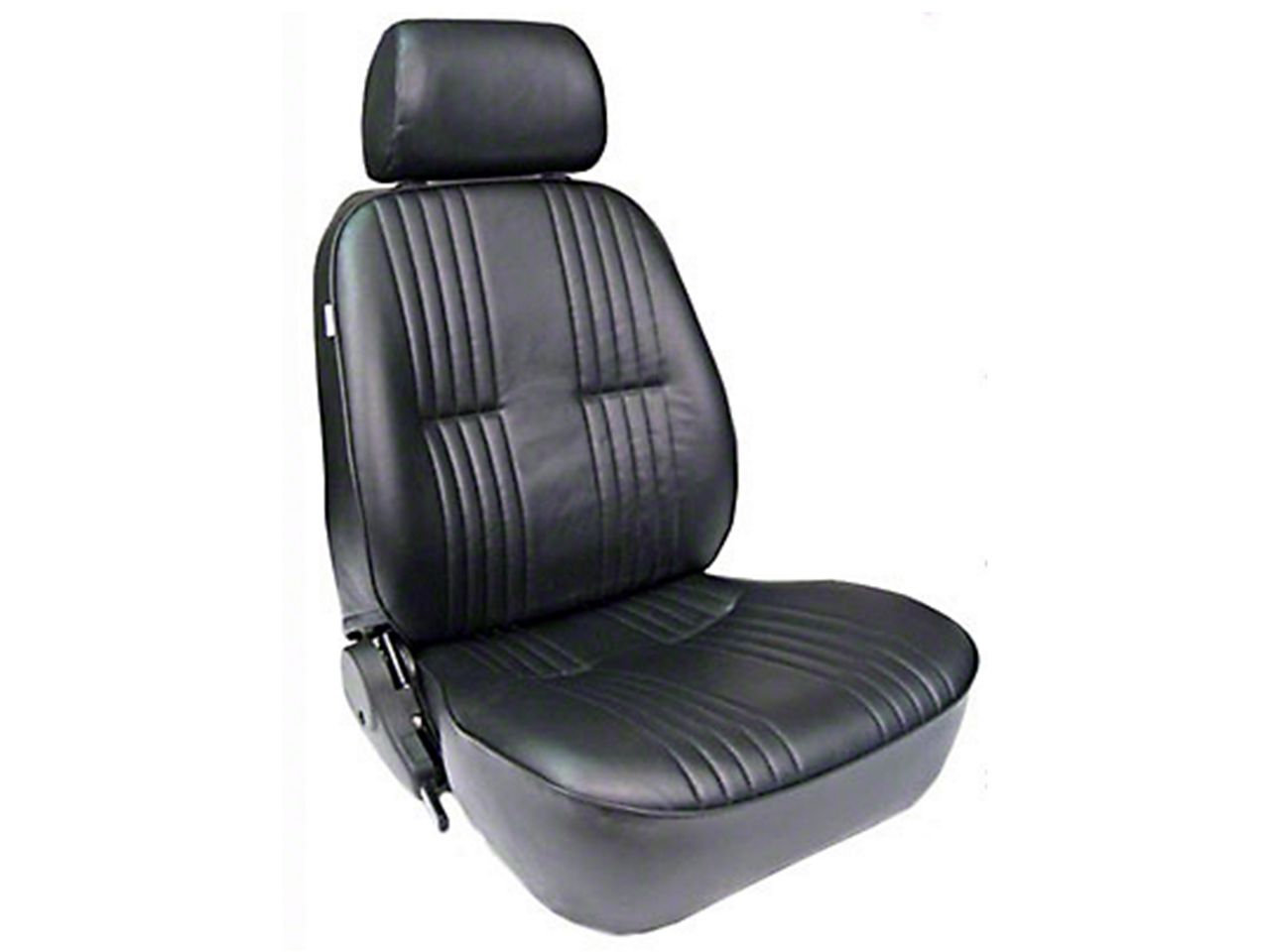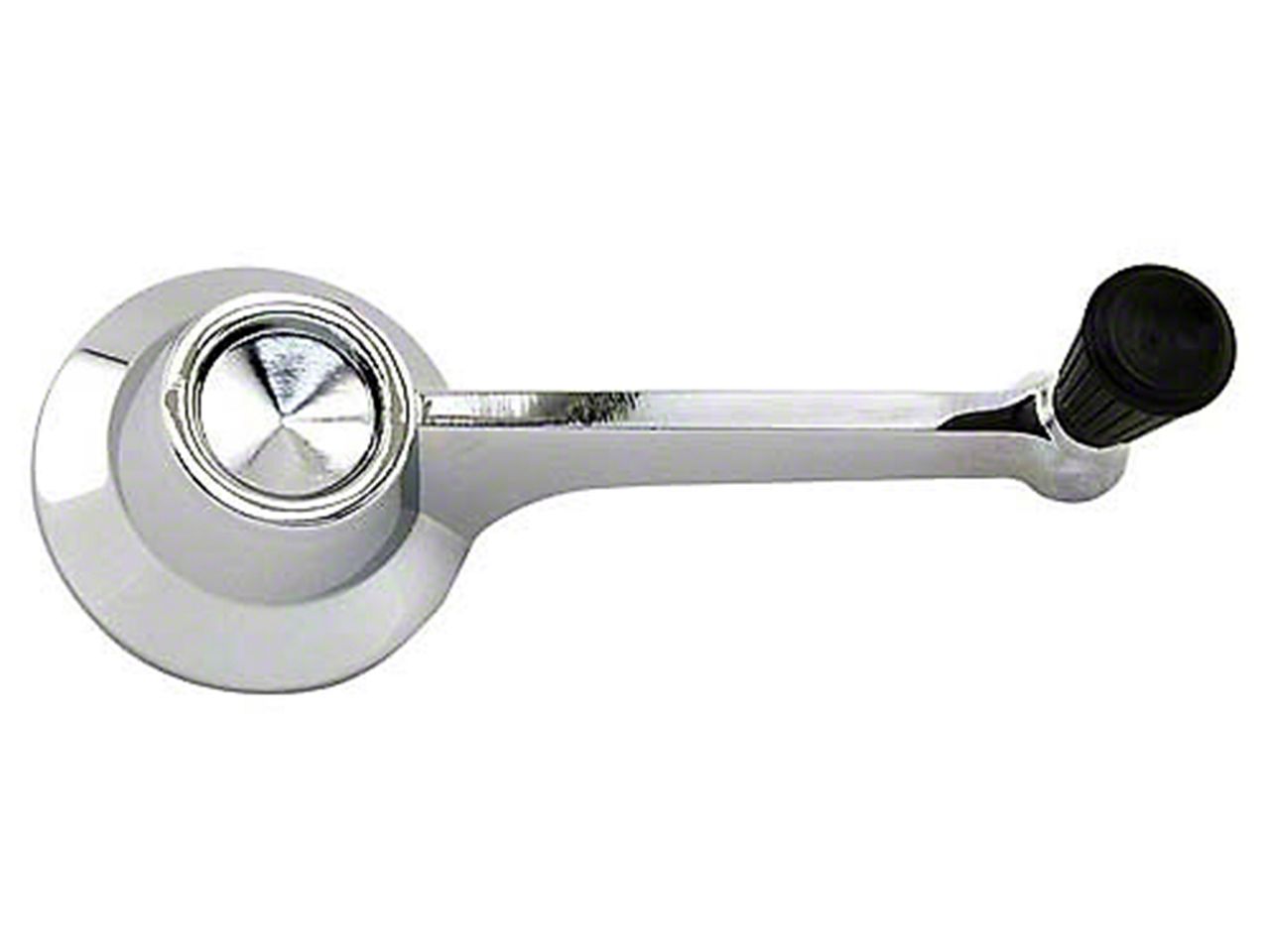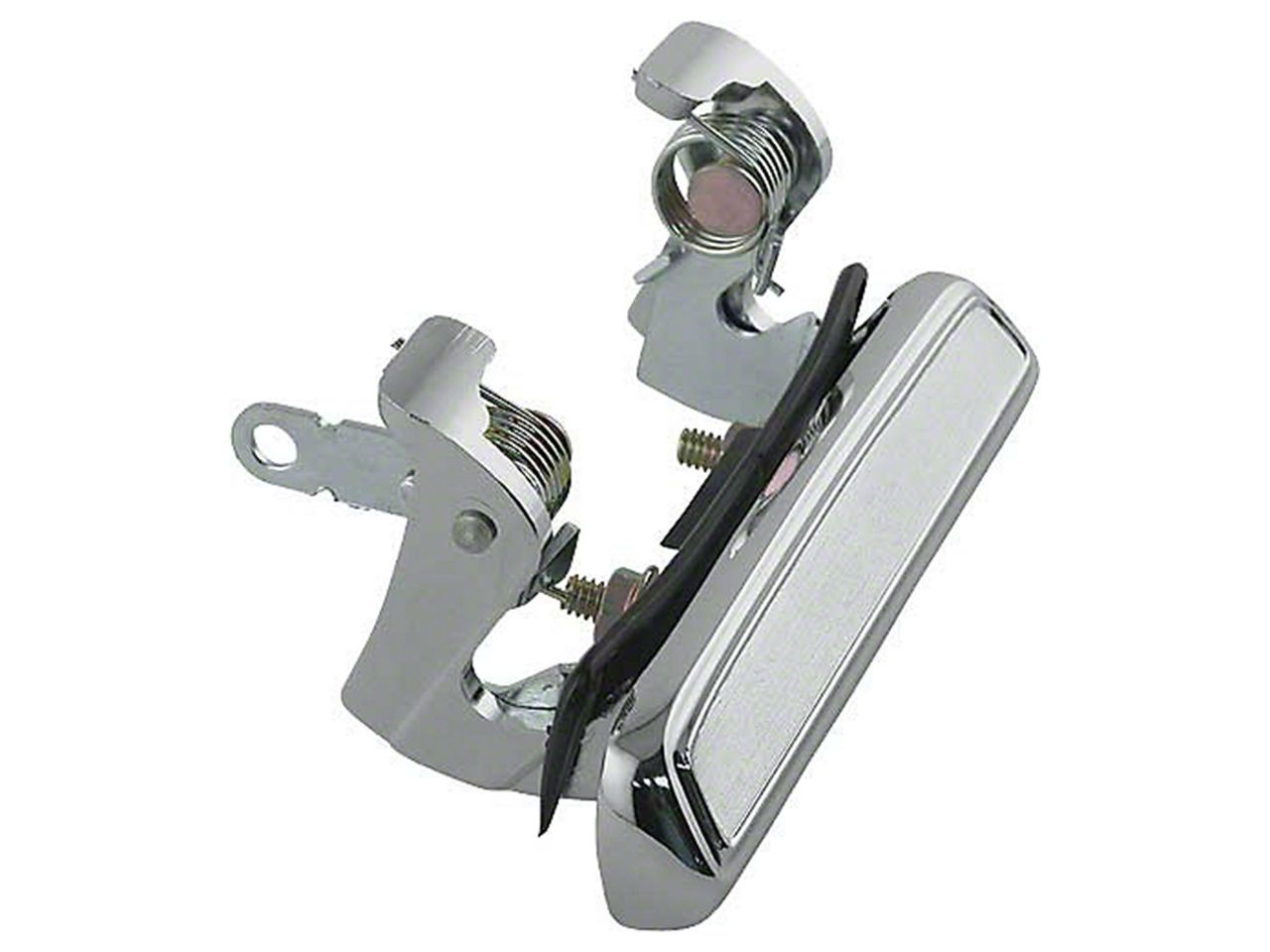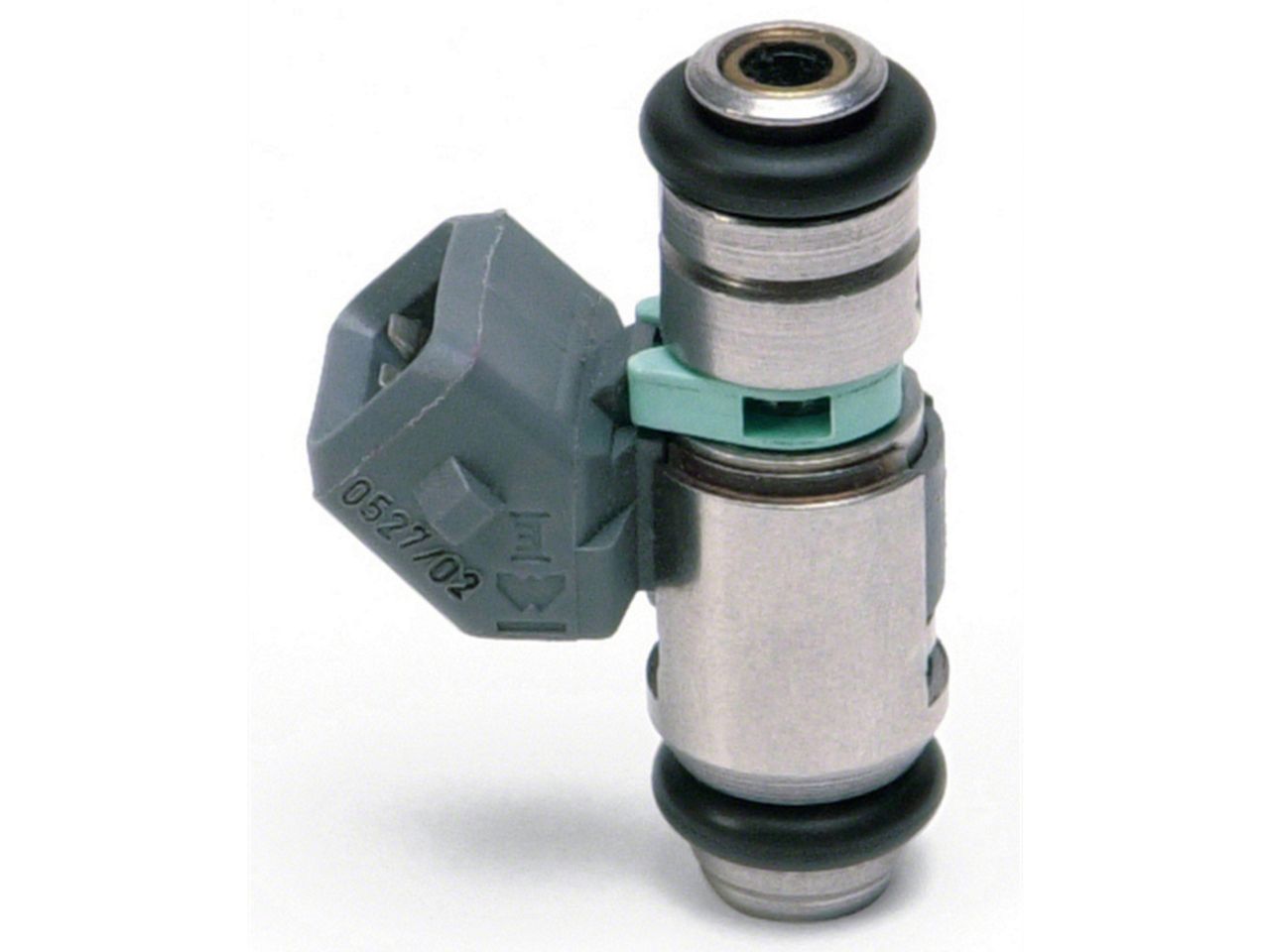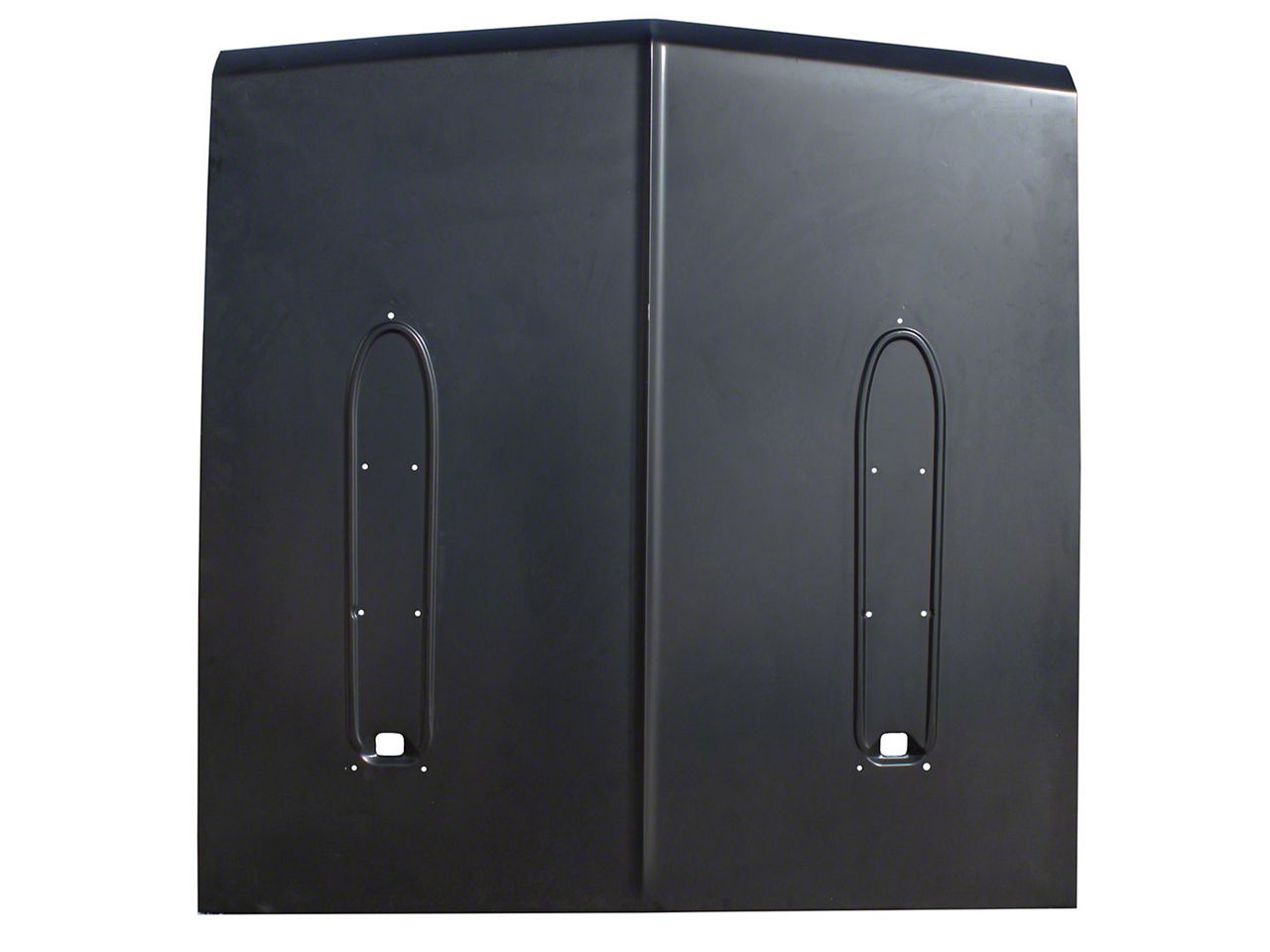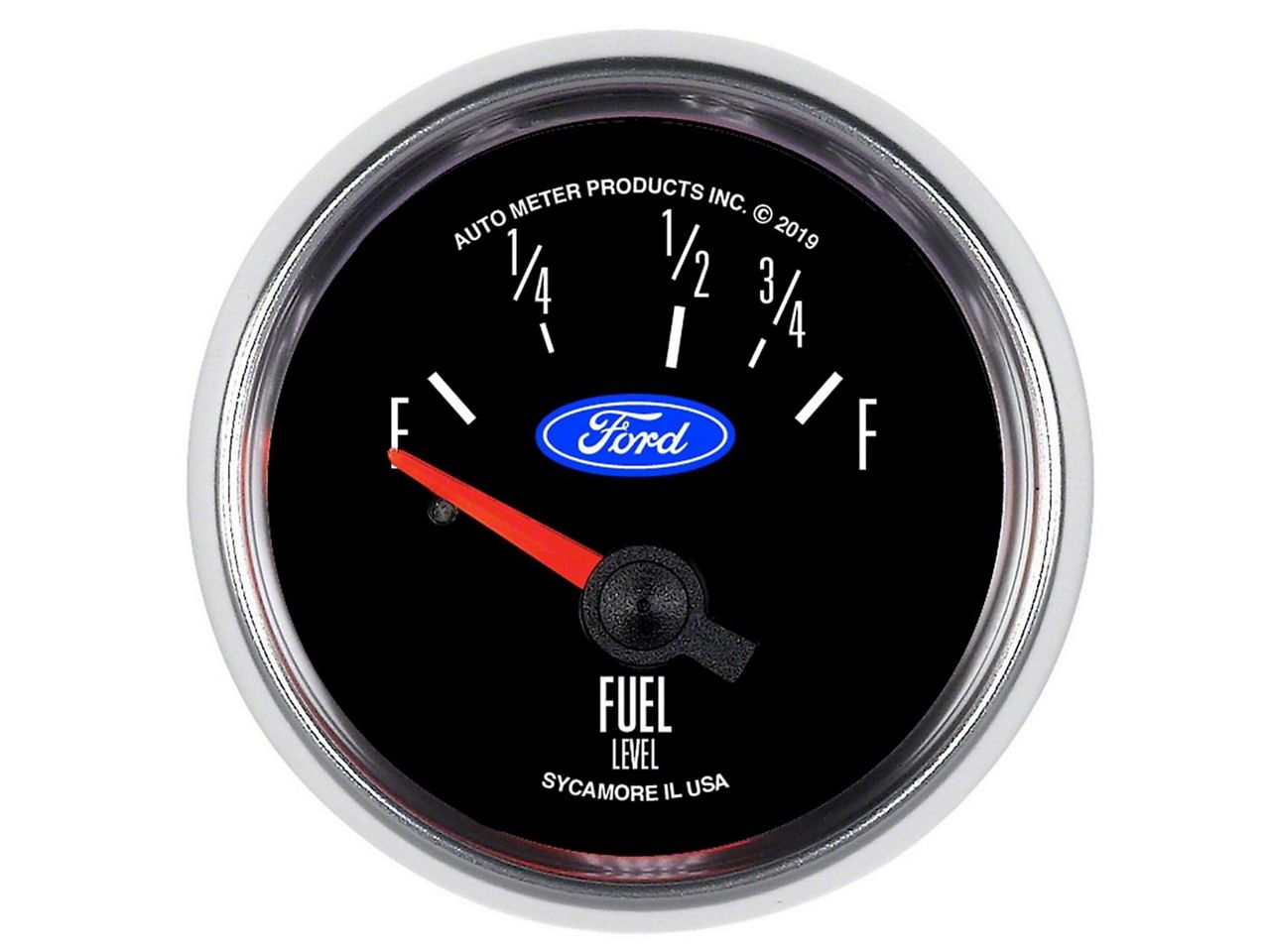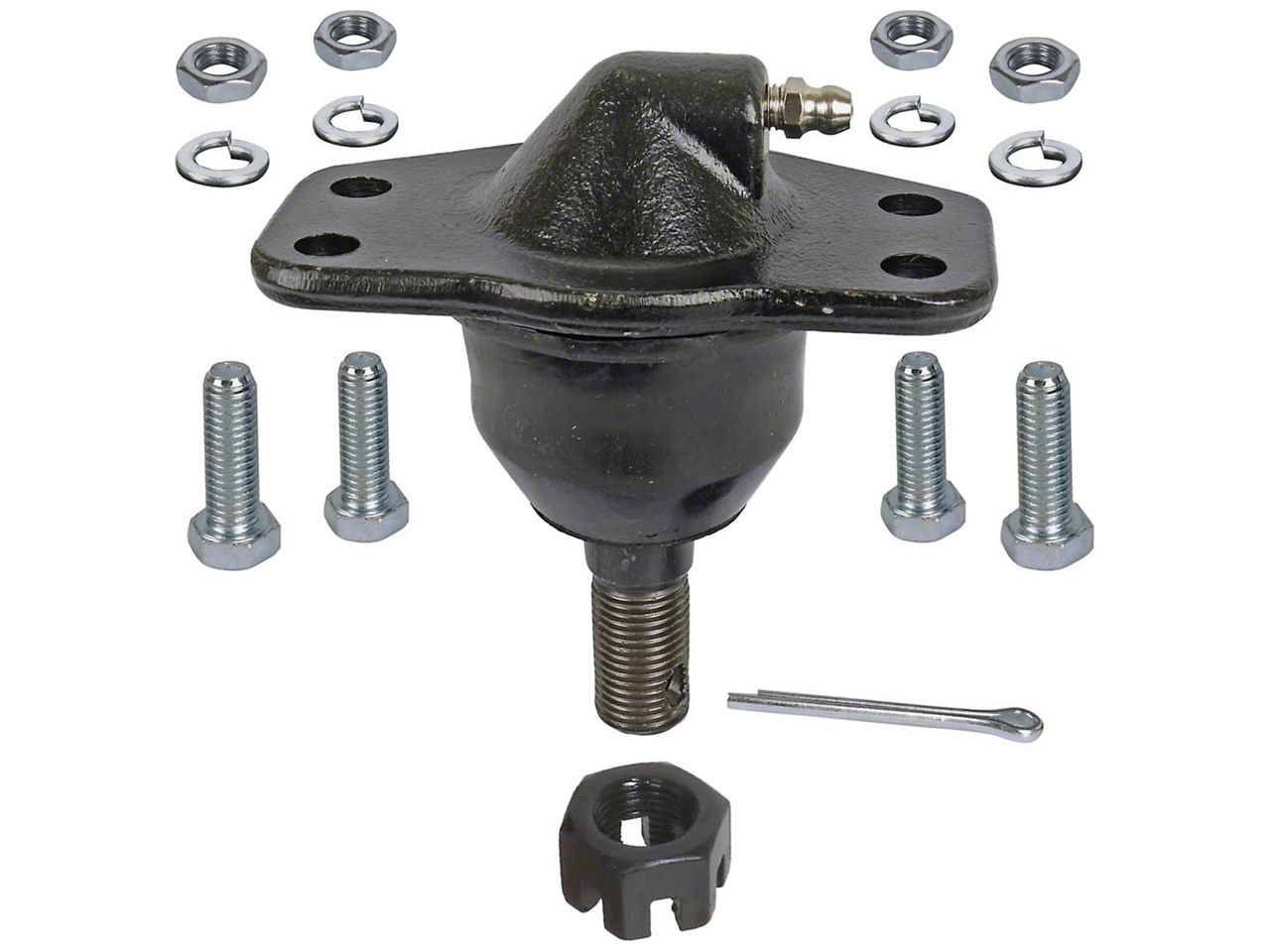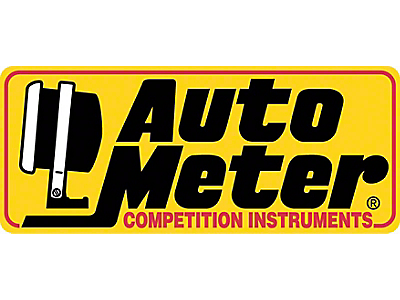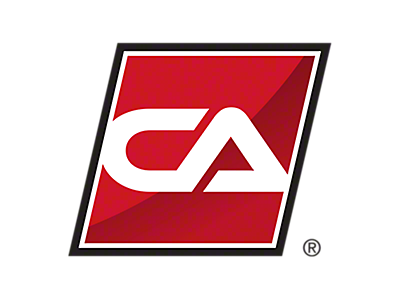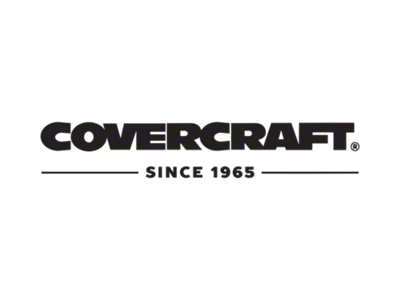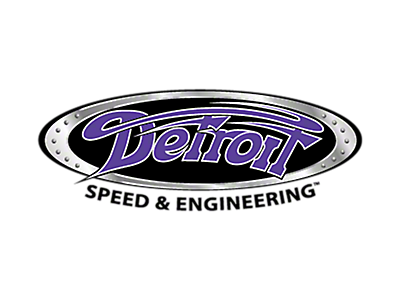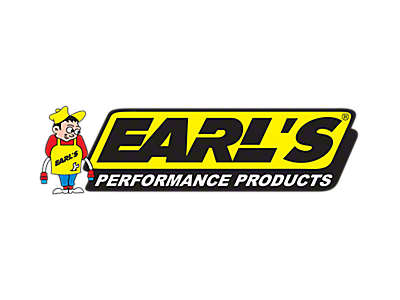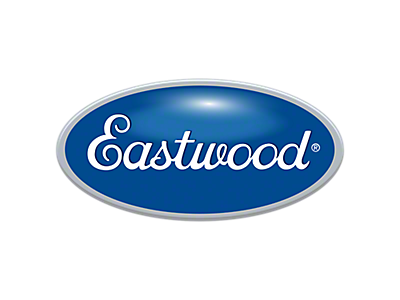"Fairlane / Torino / Montego FAIRLANE HISTORY The Fairlane was safely in the middle of the road Although the Fairlane had been a mainstay in the Ford lineup since its introduction in 1955, some big, or perhaps not so big, changes were in store for the model in 1962. With the recent success of the compact Ford Falcon and its slightly larger cousin, the Comet, Ford determined the market was right for a mid-size or intermediate car. Falling somewhere between the Falcon and full-size Galaxie, the Fairlane utilized a unitized design similar to the Falcon and shared many styling elements of the Galaxie. The Fairlane was safely in the middle of the road regarding engineering and style with one exception; Ford chose its new intermediate model to introduce a new small block V8 engine. Assembled at Ford’s Windsor, Ontario plant, the thin wall cast block provided for a relatively lightweight yet powerful engine. The 221 cubic inch V8 would be the basis for the 260 and 289 cubic inch V8’s that soon followed. The “Windsor” engine, as it would come to be known, would eventually replace the venerable Y-Block, introduced in 1954, throughout the smaller sized cars within the Ford lineup. The Windsor V8, in some form, would remain in Ford’s service for over three decades. The 1962 Ford Fairlane was available as a 4-door Sedan, 2-door Hardtop, and 4-door Station Wagon. Fairlanes could be purchased as an upgraded 500 model and, introduced in mid 1962, a 500 Sports Coupe. The Sports Coupe came standard with front bucket seats and a console, and offered the 260 cubic inch V8 as an option. Sales for the Fairlane’s introductory year were good at nearly 300,000. As Ford has often done with successful models throughout its history, they opted not to tamper much with the Fairlane’s design for the following year. The 1963 Ford Fairlane retained many of the styling cues from 1962, including small tail fins. The 289 V8 engine was offered as an option and a high performance version of the engine was rated at 271 horsepower. Ford’s focus on offering performance options for the Fairlane was a hint at what was to follow. In 1964, The Ford Fairlane was modestly restyled. The most noticeable change occurred at the rear of the car with the elimination of the tail fins. Other changes included an upgraded suspension to improve ride quality and turn signals that would cancel with the turning of the steering wheel. Fairlane performance perhaps reached its pinnacle in 1964 with the introduction of the very limited and highly modified “Thunderbolt” model. The first major body style change for the mid-sized Fairlane occurred in 1965. Bigger and boxier than previous models, the 1965 Ford Fairlane signaled a change in the definition of what comprised a mid-sized car. This trend would continue throughout the remainder of the decade and into the 1970’s as the Fairlane eventually would grow to a size previously defined as full-size. The Fairlane was completely redesigned for 1966. Clean, crisp lines brought the model in line with contemporary design. The new design allowed for a more spacious engine bay and, with the addition of a heavy-duty suspension, the Fairlane could be filled for the first time with a few of Ford’s fire-breathing FE big block V8s. The introduction of the GT and GTA packages put the Fairlane securely in the muscle car race of the 1960’s. GT Fairlanes were equipped with a 390 cubic inch V8 engine, upgraded suspension and front disc brakes. The body received a special hood, GT badges and GT stripes. The interior featured bucket seats, a console and GT steering wheel. The GTA package included all the upgrade options of the GT with the addition of a SportShift Cruise-O-Matic automatic transmission. At the top of the performance options for the 1966 Fairlane was the 427 cubic inch V8. Offered only for the 2-door Fairlane 500 and Fairlane 500XL models, the 427 sat between two modified shock towers equipped with heavy-duty springs, and under a fiberglass hood with a working hood scoop. The 427 was rated at 410 horsepower with a single four-barrel carburetor and 425 horsepower when equipped with a dual four-barrel set-up. Other upgrades included front disc brakes and better handling through improved steering and suspension components, as well as bigger tires. Ford’s move toward high performance helped them reach sales numbers of just over 317,000 for Fairlane in 1966. Ford changed little in the Fairlane’s design for 1967, but sales fell significantly to just over 238,000. Changes on the way for the following year would help the Fairlane rebound. The Ford Ranchero, which shared the full-size Fairlane platform when introduced in 1957, was shifted to the smaller Falcon platform in 1960. Perhaps in response to Chevrolet’s increasing success with the El Camino, based on an intermediate platform, Ford returned the Ranchero to Fairlane in 1967. The Ford Ranchero would remain part of a mid-sized platform from Fairlane, to Torino, and ultimately the LTD II before the end of its run in 1979. In 1968, Ford introduced the Torino as the top of the line Fairlane model. A complete redesign from the previous two years, the 1968 Ford Fairlane was pushing the boundaries of a mid-size or intermediate car and getting closer in dimensions to a full-sized car. The increased size continued to be home for some of Ford’s best high performance V8 engines including versions of the 302, the 390, the 427, and in mid-year, the 428 Cobra Jet. The GT package was moved to the Torino line and included standard items such as bucket seats, a console, and GT emblems, stripes, and wheel covers. GT Torinos were available as 2-door hardtops, 2-door “Sportsroof” fastbacks, and convertibles. fun facts: Fairlane - The name was derived from Henry Ford’s country estate, “Fair Lane,” near Dearborn, Michigan Thunderbolt - Designed specifically for drag racing with the help of car fabricators at Dearborn Steel Tubing, the lightweight Thunderbolt had a 427 cubic inch big block shoehorned between its shock towers. Horsepower was conservatively rated at 425 and, combined with a variety of creative weight saving techniques including Plexiglas windows and a few fiberglass body parts, powered the Thunderbolt down a quarter mile in just over 11 seconds. Not designed for street use, the T-Bolts were stripped of all unnecessary items including mirrors, sun visors, and sound deadening material. With only around 100 produced, approximately 60 of which survived, the rare Thunderbolt is prized among car collectors. TORINO HISTORY The Ford Torino In 1968, Ford introduced the Torino as the top of the line Fairlane model. A complete redesign from the previous two years, the 1968 Ford Fairlane was pushing the boundaries of a mid-size or intermediate car and getting closer in dimensions to a full-sized car. The increased size continued to be home for some of Ford’s best high performance V8 engines including versions of the 302, the 390, the 427, and in mid-year, the 428 Cobra Jet. The GT package was moved to the Torino line and included standard items such as bucket seats, a console, and GT emblems, stripes, and wheel covers. GT Torinos were available as 2-door hardtops, 2-door “SportsRoof” fastbacks, and convertibles. 1969 carried over the styling change from the previous Fairlane and Torino model year and continued to offer a wide variety of performance options. The Torino GT package, which sold well in 1968, remained relatively unchanged. New for 1969 was the Cobra. Designed as a no frills muscle car, the Cobra was aimed at budget minded performance enthusiasts. Other than a small Cobra reference, either in the form of a snake decal or emblem on the front fenders, the Cobra offered little in exterior trim to distinguish it from a more pedestrian model. A 428 cubic inch Cobra Jet V8 engine, rated at 335 horsepower, was standard equipment. Other standard features included a heavy-duty suspension, wide wheels and tires, and a 4-speed manual transmission. Performance oriented options for the Cobra included an automatic transmission, power disc brakes, a Detroit Locker differential, a functional hood scoop, and for the interior, bucket seats and a tachometer. Just when it seemed that the pursuit of performance could be taken no further, Ford offered one more unique option for 1969. Ford’s desire to win at the racetrack, evident in the development of many specialty high performance models throughout its lineup during the decade, found its way to the Torino in the form of the NASCAR inspired Torino Talladega. For 1970, a new design would again increase the size of Ford’s mid-sized offering and a new engine option would increase its performance. 1970 would also be the last year for the Ford Fairlane model and in 1971, Ford’s mid-sized line was switched entirely to Torino. The 1970 Torino body styling, a subtle and tasteful facelift of the previous two years’ models, included a lower stance, aerodynamic appearance, and refinements such as hideaway headlights. A popular option, the flip style hideaway headlights created a clean looking full front grille when closed. The largest Torino to date was also offered with more cubic inches under the hood in the form of the big block 429 V8 engine. Standard for the Torino Cobra, the base 429 powerplant was rated at 360 horsepower. The 429 was also available in an upgraded Cobra Jet form and with the option of a functional Ram Air set-up, both rated at 370 horsepower. At the top of the engine option list was the Boss 429 rated at 375 horsepower. For those who weren’t willing to spring for the peak performance engines offered for the Torino, the standard 302 and 351 cubic inch V8’s put plenty of power under the pedal. Performance and refined style helped land the Torino Motor Trend Magazine’s Car of the Year Award for 1970. The 1971 Ford Torino model differed only slightly in appearance from 1970. Changes included a new split grille and some minor trim shuffling. Under the hood, the changes were significant. In an effort to comply with recently enacted fuel economy and emissions regulations, Ford detuned and shuffled engines within the Torino line. The 302 cubic inch V8 was still available as an option, but the 250 cubic inch six-cylinder became the base engine for Torino. The Torino GT was also still available, but with a 351 cubic inch Cleveland V8 engine as standard equipment. Engine options included the 429 Cobra Jet and 429 Cobra Jet Ram Air, but the Boss 429 was no longer available. For 1972, the Torino was redesigned using many characteristics carried over from the previous generation. The 1972 Torino styling emphasized the ""long hood short deck"" look and had strong elements of Coke bottle styling. The Torino line was also revised to be made up of basic models called ""Torino"" and more upscale models called ""Gran Torinos."" The most radical styling change was a large eggcrate grille in an oval opening on Gran Torinos. Gran Torinos had chrome bezels surrounding the headlamps on each side of the large oval grille. Base Torinos had a full width argent eggcrate grille that surrounded the headlights. Base Torinos also used a unique hood and front bumper differentiating it from the Gran Torino models. The Torino's front fenders were flared around the wheel opening and the rear quarter panel had strong character line extending to the rear bumper. The windshield had a more rakish 60-degree angle, while the A-pillars and roof were thinner. Even with these changes, structural integrity remained the same as 1971 models. The rear featured a full width bumper that incorporated thin rectangular tail lights into each bumper end. All Torinos had ""DirectAire"" ventilation as standard equipment resulting in vent windows vanishing from four-door and station wagon models. The Torino incorporated new safety features for 1972, including new flush mount door handles and side door guard rails. The number of models was reduced from 14 models in 1971 to 9 in 1972. The convertible was discontinued, and the 4-door hardtops and sedans were replaced with 4-door ""pillared hardtops."" This was Ford's term for 4-door sedans with frameless door glass. All other body styles remained, including the fastback, which Ford continued to dub ""SportsRoof"". ""Torino"" remained the base series, but the mid-level Torino 500 was renamed ""Gran Torino"". The Torino Brougham was reduced to an option package for the Gran Torino, and Torino GT became ""Gran Torino Sport."" The Torino and Gran Torino were available as a 2-door hardtop and a 4-door sedan; the Gran Torino Sport was available as a 2-door hardtop and SportsRoof. The station wagon line-up consisted of three models: ""Torino,"" ""Gran Torino,"" and ""Gran Torino Squire."" The Cobra model was discontinued as the Torino line was refocused toward luxury and de-emphasized performance. A 1972 Ford Gran Torino Sport SportsRoof was featured in the movie Gran Torino, directed by and starring Clint Eastwood. The base engine was the 250 cu in. inline-six in all models except the Gran Torino Squire station wagon and the Gran Torino Sport which both had a 302-2V small-block V8 as standard. Available engines included the 302-2V, a 351-2V ""Windsor"" or ""Cleveland"", a 351C-4V ""Cobra Jet"" (CJ), a 400-2V, and a 429-4V. The 400-2V was a new engine to the Torino line-up, and was part of the 335 series engine family like the 351 Cleveland. The 429-4V was not a high-performance engine like the Cobra Jets of previous years; instead, it was a high torque, low revving engine. Emissions, low lead and fuel economy requirements had become more strict for 1972. To meet these requirements, compression ratios on all Torino engines were dropped to at least 8.5:1, and all engines ran on regular gasoline. These engines generally produced less power than their predecessors in 1971, although this was exaggerated due to the switch to the new SAE net bhp ratings from the SAE gross figures used in 1971. As a result, the figures are not directly comparable. All models came equipped with a three-speed manual transmission as standard equipment. The Cruise-O-Matic remained optional, but was a mandatory option for the 351-2V, 400-2V and 429-4V. The 351-4V CJ required either the 4-speed or the Cruise-O-Matic as mandatory options. With the only performance engine being the 351-4V CJ, performance was good but not at the ""super car"" levels of the 429 Cobra Jet Torinos. The 351-4V CJ was new for 1972 and offered a number of performance enhancing features not offered on the 1970–71 351C-4V. It included a special intake manifold, modified camshaft, special valve springs and dampers, a 750 CFM Motorcraft Carburetor, 4-bolt main bearing caps and 2.5-inch dual exhaust. The 351 CJ was the only engine equipped with dual exhaust and it was the only engine that could be mated to the available four-speed transmission. The Ram Air induction system was available, and could be equipped on 351 CJ and 429 powered cars. Performance from the 1972 351 CJ was competitive with the 1970-71 Torinos with the high compression 351-4V. Car and Driver tested a 351 CJ, 4-speed Gran Torino Sport SportsRoof with 3.50:1 gears to have a 0 - 60 mph time of 6.8 seconds. Car and Driver did not publish its quarter mile times, but Cars magazine tested a Gran Torino Sport SportsRoof with a 351 CJ, C-6 automatic, and 3.50 gears to run though the quarter mile in 15.40 seconds. The biggest change for the Torino was the switch to body-on-frame construction from the unit-construction of the 1971 models. The new chassis was a perimeter design that was used to help give the Torino a quieter and more isolated ride. A significant change to Torino for 1972 was changing to separate wheelbases for 2-doors (114–inch) and 4-doors (118-inch). Both featured an energy absorbing ""S"" shaped front end, torque boxes to isolate road shock, fourteen rubber body mounts and five solid cross members. The front suspension used an unequal length control arm design, with a computer selected coil spring mounted on the strut stabilized lower control arm, much like the full size Ford LTD. The rear used the ""Stabul"" four link suspension with a computer selected coil spring mounted on a solid axle. The new suspension and chassis had a wheel track at least 2 inches wider than the 1971 models. Motor Trend stated the ""road isolation and vibrational dampening is superb"" in its test of a 1972 Gran Torino Brougham 4-door. Overall, the 1972 Torino was a great success with the public and a total of 496,645 units were produced, making it the best-selling intermediate for 1972. This was the first time Ford had ever outsold the Chevrolet Chevelle since its 1964 introduction. The most obvious change for the 1973 model saw was a new front fascia, required to meet new federal regulations. The new regulation mandated that all cars manufactured after September 1, 1972 must be able to take a 5 mph strike to the front without damaging safety related components such as headlamps and the fuel system. For 1973 only, rear bumpers had a 2.5 mph requirement. The Torino's front end featured totally new sheetmetal from the firewall forward, with a blunt, more squared-off fascia replacing the previous year's pointed prow. The new large square 5 mph energy absorbing bumper replaced the almost body-fitting chrome bumper used on the front of the 1972 Torino. The new larger bumpers caused all Torino models to increase in length by at least 1"", and weight also increased by at least 100 lb. for all models. Rear bumpers and taillights were unchanged from 1972, but used new brackets that increased the space between the bumper and the sheetmetal. The model line-up for 1973 increased to 11 from the 9 models in 1972. The new top level Torino was the ""Gran Torino Brougham"", available as a 2-door hardtop and a 4-door sedan. All other models remained the same. Radial tires were also a new option, and offered longer tread life and better road manners. The standard engine remained as the 250 CID inline-six for all models, except the station wagons and Sport which used the 302-2V. Engine options also remained the same, and all engines now had their compression ratio dropped to 8.0:1. Power for all engines was slightly lower than in 1972. The 351 CJ continued to be the only high-performance engine and only saw a 2 hp drop from 1972, although performance decreased again due to the weight increase. Police package Torinos had all the engine options of the civilian models while the ""Interceptor"" package featured a 460-4V new for 1973. All models featured larger 11-inch rear drum brakes for 1973 to help cope with the extra weight; 1972 models used 10-inch drums. Car and Driver wrote that the Torino was as ""quiet as a Jaguar, smooth as a Continental, the Torino's ride is exceptional...even with the competition suspension."" Their test of a SportsRoof equipped with the 351 CJ, C-6 automatic, and 3.25:1 gears, resulted in a 0 - 60 mph time of 7.7 seconds while the quarter mile went by in 16.0 seconds at 88.1 mph. The 0-60 time was 0.9 seconds slower than the 1972 model Car and Driver tested a year before; however, this can partially be attributed to differences in gear ratio, transmission type, and an almost 350 lb. increase in weight. 1973 was another successful year for the Torino, with 496,581 units being sold. The public continued to respond well to the Torino, even with the stiff competition from GM's new for 1973 ""Colonnade"" intermediates. Torino in fact outsold its main competitor, the Chevrolet Chevelle, by over 168,000 units. The 1974 model year saw more revisions to the Torino line. Government safety regulations now required that the rear bumpers must also meet the 5 mph standard, so all Torinos had the rear bumper and tail lamp panel redesigned. The new rear bumpers were much larger, square shaped, and sat lower on the body. Torino added several new options and features for 1974. Gran Torino 2-doors now were available with ""opera windows"", a popular option during the mid-1970s, while Brougham models had these as a standard feature. All 2-door Torinos had fixed rear windows unlike the 1972–73 models. All 1974 Torinos featured the seat belt-interlock system, as mandated by the U.S. government. This short-lived safety system would be removed after the 1974 model year. The Torino model line-up was the same as 1973, with two exceptions. The Gran Torino Sport no longer was available with the ""SportsRoof"" fastback roofline, and the new ""Gran Torino Elite"" was introduced. The Gran Torino Elite was developed by Ford to help respond to Chevrolet's ever popular Monte Carlo. The Elite, was designed as an entry level ""personal luxury"" vehicle, for those who couldn't afford a Thunderbird, and was in the same price range as the Monte Carlo. Torinos were now even larger and heavier than ever before. All body styles were approximately 5"" longer due in part to the safety bumpers. With all Torinos gaining weight and inches, the 250 CID I-6 was no longer the base engine for any Torino. However, Chilton's and Motor's repair manuals list availability and data for 6-cylinder powered Torinos, even though original sales literature does not list this engine as being available. That said, it appears that some base model Torinos were built with the 250 CID 6-cylinder engine; in fact one of the 6-cylinder Torinos became the main car for the 2004 movie Starsky & Hutch. All Torinos and Gran Torinos now came with the 302-2V as the base engine, and the 3-speed manual remained the standard transmission. As in previous years, the larger V8 engine options required Cruise-O-Matic as a mandatory option. The 429-4V was replaced with the 460-4V which produced more power and torque, and was equipped with dual exhaust. Like the 429, the 460 was automatic transmission only. All other engines saw a slight increase in power levels compared to 1973. The 351 CJ remained the only performance engine (it produced more power than the 460-4V), and saw a 9 hp. increase and a loss of 22 ft·lb. of torque. It was the only engine available with the 4-speed transmission; however, this engine was limited to 2-door models only. The tide had turned against performance cars especially since the Oil Crisis in the fall of 1973. Accordingly, 1974 was the last year for the 351 CJ and four-speed transmission. Torino had another successful year in 1974, and continued to be ever popular. Ford produced 426,086 units, including 96,604 Gran Torino Elites. For the 1975 model year, the Ford Torino received a number of minor improvements, but was for the most part unchanged. The model line-up received only one change; the Gran Torino Elite was no longer part of the Torino line-up. The Elite was now an independent model, and marketed simply as the Ford Elite. All Torinos featured solid state ignition systems for 1975, which improved starting performance and fuel economy, while reducing maintenance costs. Radial tires, another fuel saving feature, power steering and power brakes were all new standard features for all Torinos. 1975 Torinos featured a new steering wheel design and a new for that year option was a ""Fuel Sentry"" vacuum gauge. The Federal Clean Air Act caused Ford to install catalytic converters for 1975 to help meet new emission standards. The converter significantly reduced the power output of the engines due to increased exhaust back pressure. In response, Ford changed the base engine on all Torinos to the 351-2V engine; along with this change, the Cruise-O-Matic transmission became standard. No manual transmissions were available. Power for all engines, except the 460, was significantly reduced compared to 1974, and with the weight increase, fuel economy and performance continued to decrease. The 400-2V and the 460-4V were the only engine options, as the 351-4V was no longer available. The 351 Cleveland was no longer produced after 1974. The new 351M (Modified) joined the line-up, although the 351W continued to be used alongside when the 351-2V was specified. The 351M used the 400s tall deck block, and shared its connecting rods and intake manifold, so more parts were shared than between the 400 and 351C saving Ford production costs. The 351M and 351W had no appreciable power output difference; due to emissions standards, the 351M was not available in California. Sales for Torinos dropped off significantly from the 1974 model year. With the Elite now a separate model, Torino lost a large portion of its sales. Ford produced only 195,110 Torino's for 1975. Even with the addition of the 123,372 Elites produced for 1975, total output was 318,482 which was still significantly lower than 1974. Sales decreases were likely due to the increased demand for smaller economical cars, while Ford's new ""sensibly"" sized Granada likely also stole sales from Torino. The 1976 model year saw no major changes to the Torino line-up. The Gran Torino Sport was discontinued, and so the Torino consisted of 9 separate models; 2- and 4-door versions of the Torino, Gran Torino, and Gran Torino Brougham, along with three station wagon models. New options for the 1976 model year included a power trunk release and an automatic parking brake release. Gran Torino 2-doors could now be ordered with the center console when optional bucket seats were specified; previously the console was only available on Sport models. In addition, opera windows and landau roofs were now available options for all 2-door models. There were no styling changes made to Torino for 1976. Engine options remained the unchanged for 1976, however fuel economy was improved on all engines with revisions to the engine spark advance and the EGR valve operation. The 351-2V engines and the 400-2V had a power and torque increase, and the 460-4V had a power decrease. In an attempt to help improve fuel economy, the standard rear axle ratio for all models was now 2.75:1. Production total for Torino in 1976 was 193,096 units, slightly lower than 1975. This would be the final year for the Ford Torino. The Torino chassis continued to live on under the Ford LTD II, Ford Thunderbird, the Mercury Cougar and the Ford Ranchero for 1977 to 1979 model years. MERCURY MONTEGO HISTORY The 1960s would bring a new look and a new passion The Mercury Montego nameplate first appeared in Canada in 1967 with the release of the Meteor line from Mercury. It was in 1968 that the Montego joined the lineup as the equivalent of the Ford Torino. The Montego kept its name until 1977 when it was renamed the Cougar. The Montego actually began its American run in 1968 as a luxury version of the Mercury Comet, which was then an intermediate vehicle. It could be purchased in four body styles: 2-door hard top, 4-door sedan, station wagon and convertible. It was also available with a more stylish MX trim. In 1970 the Montego was noted for its grille and forward-thrusting hood design. The convertible was available until 1970, when the 4-door hardtop and woodgrained updated MX Villager station wagon was introduced. The second generation of the Montego ran from 1972-1976. In 1972 the Montego was completely redesigned. The cars were now built body-on-frame with a 114-inch wheelbase for coupes, and 118-inch wheelbase for wagons and sedans. True hardtops weren’t available during this time. Instead the 4-door sedans had pillared hardtops, which used a thin “B” pillar with frameless door glass. In 1972 the Montego GT was introduced. It was a fastback coupe and replaced the Cyclone. Sales went through the roof. In fact, 1972 sales were up over 136% compared to the previous year. Sales remained high throughout that year, but in 1973 the company started to see a drop in sales. Concerns regarding gas mileage was one reason, but the release of the 1974 Cougar which was built on the Montego’s platform and had a very similar style, was likely a greater one. In 1969 a redesign came to give the Mercurys a new look to stand up against the Lincoln Continental in appearance. The wheelbase was extended to 124 inches. The station wagon, however, did not have its wheelbase extended. The 2-door hard top Mercury Marauder was also introduced in 1969, featuring a fastback roofline and a tunneled rear window. It was actually promoted as the Marauder X-100 and featured Kelsey-Hays road wheels, rear fender skirts, and a choice of Twin-Comfort lounge seats, bench seats, or bucket seats and u-shaped automatic transmission shifter in the floor console. Under the hood the Marauder X-100 had a 420 cu 7.0-liter engine (3-speed FMX automatic was optional), while the standard Marauder had a 390 cu 6.4-liter Ford FE engine with a manual 3-speed transmission. In 1977 the Montego name was officially dropped and the Cougar name was used across the intermediate line. The Fairlane was safely in the middle of the road Although the Fairlane had been a mainstay in the Ford lineup since its introduction in 1955, some big, or perhaps not so big, changes were in store for the model in 1962. With the recent success of the compact Ford Falcon and its slightly larger cousin, the Comet, Ford determined the market was right for a mid-size or intermediate car. Falling somewhere between the Falcon and full-size Galaxie, the Fairlane utilized a unitized design similar to the Falcon and shared many styling elements of the Galaxie. The Fairlane was safely in the middle of the road regarding engineering and style with one exception; Ford chose its new intermediate model to introduce a new small block V8 engine. Assembled at Ford’s Windsor, Ontario plant, the thin wall cast block provided for a relatively lightweight yet powerful engine. The 221 cubic inch V8 would be the basis for the 260 and 289 cubic inch V8’s that soon followed. The “Windsor” engine, as it would come to be known, would eventually replace the venerable Y-Block, introduced in 1954, throughout the smaller sized cars within the Ford lineup. The Windsor V8, in some form, would remain in Ford’s service for over three decades. The 1962 Ford Fairlane was available as a 4-door Sedan, 2-door Hardtop, and 4-door Station Wagon. Fairlanes could be purchased as an upgraded 500 model and, introduced in mid 1962, a 500 Sports Coupe. The Sports Coupe came standard with front bucket seats and a console, and offered the 260 cubic inch V8 as an option. Sales for the Fairlane’s introductory year were good at nearly 300,000. As Ford has often done with successful models throughout its history, they opted not to tamper much with the Fairlane’s design for the following year. The 1963 Ford Fairlane retained many of the styling cues from 1962, including small tail fins. The 289 V8 engine was offered as an option and a high performance version of the engine was rated at 271 horsepower. Ford’s focus on offering performance options for the Fairlane was a hint at what was to follow. In 1964, The Ford Fairlane was modestly restyled. The most noticeable change occurred at the rear of the car with the elimination of the tail fins. Other changes included an upgraded suspension to improve ride quality and turn signals that would cancel with the turning of the steering wheel. Fairlane performance perhaps reached its pinnacle in 1964 with the introduction of the very limited and highly modified “Thunderbolt” model. The first major body style change for the mid-sized Fairlane occurred in 1965. Bigger and boxier than previous models, the 1965 Ford Fairlane signaled a change in the definition of what comprised a mid-sized car. This trend would continue throughout the remainder of the decade and into the 1970’s as the Fairlane eventually would grow to a size previously defined as full-size. The Fairlane was completely redesigned for 1966. Clean, crisp lines brought the model in line with contemporary design. The new design allowed for a more spacious engine bay and, with the addition of a heavy-duty suspension, the Fairlane could be filled for the first time with a few of Ford’s fire-breathing FE big block V8s. The introduction of the GT and GTA packages put the Fairlane securely in the muscle car race of the 1960’s. GT Fairlanes were equipped with a 390 cubic inch V8 engine, upgraded suspension and front disc brakes. The body received a special hood, GT badges and GT stripes. The interior featured bucket seats, a console and GT steering wheel. The GTA package included all the upgrade options of the GT with the addition of a SportShift Cruise-O-Matic automatic transmission. At the top of the performance options for the 1966 Fairlane was the 427 cubic inch V8. Offered only for the 2-door Fairlane 500 and Fairlane 500XL models, the 427 sat between two modified shock towers equipped with heavy-duty s"
Eckler's Catalogs Available Now!
Talk to a Sales Tech
1-610-990-4558
M-F 8:30A-11P ET, Sat-Sun 8:30A-9P ET
